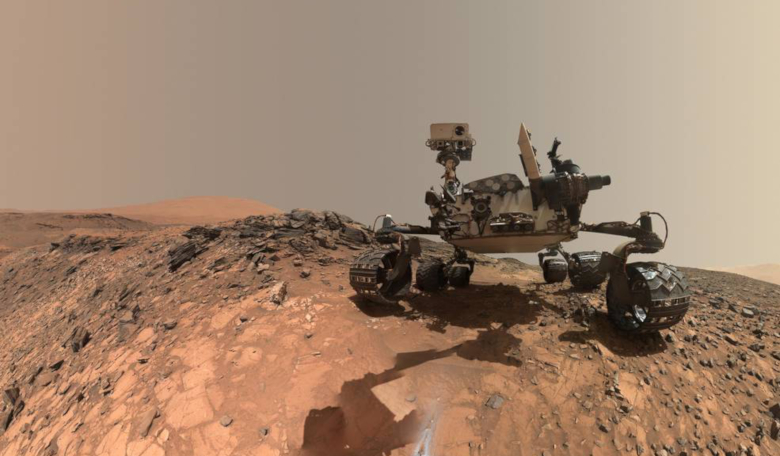Using instruments stowed on board NASA’s Curiosity rover, scientists at JPL have found what could be organic salts on the martian surface. These salts are the chemical leftovers of organic compounds and could have formed by geologic processes or be remnants of ancient microbial life, say the team behind the new study.
It might not seem like the most tastiest snack to feed on, but on Earth some organisms use organic salts, such as oxalates and acetates, for energy.
With this analogy in mind, it could be possible that microorganisms on Mars, if they existed or still do exist, could be doing the same.
Salts on Mars are likely to be widespread and are thought to have formed from the breakdown of organic matter which has been bombarded with energetic radiation blasting out from the Sun as it easily passes through the planet’s thin atmosphere.
Identifying salts with certainty on Mars however is difficult. But with a little help from instruments in-situ, such as those carried by the Curiosity rover, it could make the job easier.
And according to new research headed by James M T Lewis, an organic geochemist at NASA’s Goddard Space Flight Center in Greenbelt, Maryland, it has.
Curiosity is packed with two such instruments that could aid in the search for organic matter; a portable chemistry lab called SAM (Sample Analysis at Mars) and the Chemistry and Mineralogy instrument or CheMin for short.
CheMin uses x-rays to identify and measure the abundances of various minerals on Mars, whereas SAM analyses chemicals by heating Martian soil and rocks to release gases that reveal the composition of its samples.
The problem with this method is that heating organic salts produces only simple gases that could be released by other ingredients in Martian soil.
“When heating Martian samples, there are many interactions that can happen between minerals and organic matter that could make it more difficult to draw conclusions,” Lewis says.
But different molecules release different gases at specific temperatures; so by looking at which temperatures release which gases, scientists can infer what the sample is made of.
Copying how SAM analyses matter on Mars but performing the task in a laboratory here on Earth, Lewis and colleagues looked at the chemical signatures that pure organic salts and salts in mixtures would produce. This included analysing a range of organic salts mixed with an inert silica powder to replicate a Martian rock.
The team then compared their results with flight data the rover sent back to Earth, and found that many of the CO2 profiles produced by the organic salt samples were similar to the CO2 evolutions observed by Curiosity; a finding which indirectly points to the presence of organic salts.
“The best fits with our laboratory data included Martian materials acquired from modern eolian [wind-related] deposits and sedimentary rocks that had evidence for low-temperature alteration,” say Lewis and colleagues in their research paper published recently in the Journal of Geophysical Research: Planets.
The existence of organic salts on Mars was predicted decades ago, because they are more likely to persist on the Martian surface than big, complex molecules, argue scientists.
To find them, Lewis and colleagues suggest that until the European Space Agency’s forthcoming ExoMars rover lands on there Red Planet, CheMin is the best option as it should be able to sniff out organic salts if they are present in sufficient amounts.
“If we determine that there are organic salts concentrated anywhere on Mars, we’ll want to investigate those regions further, and ideally drill deeper below the surface where organic matter could be better preserved,” Lewis says.
The ExoMars rover is equipped to drill down to 2 meters, and will carry a Goddard instrument that will analyse the chemistry of these deeper Martian layers.
NASA’s Perseverance rover is not equipped with an instrument that can detect organic salts, but the rover is collecting samples for future return to Earth.
These will then be analysed by scientists on this planet with sophisticated lab machines to hunt for organic compounds.











